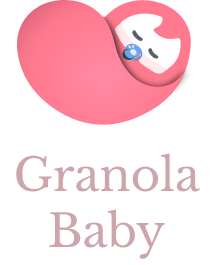One of the biggest questions new parents have is “How often should I feed my baby?” Whether you’re breastfeeding, using baby formula, or doing a mix of both, knowing when and how much your baby should eat can feel overwhelming. Babies grow quickly in their first year, and their nutritional needs change almost every month.
To make things easier, we’ve put together a month-by-month feeding schedule to guide you from the newborn stage all the way to your baby’s first birthday.
Newborn Feeding (0–1 Month)
In the first few weeks, babies have tiny stomachs and need to eat frequently. Expect to feed your baby every 2–3 hours, which adds up to about 8–12 feedings in a 24-hour period.
- Breastfed babies: Around 1–3 ounces per feeding.
- Formula-fed babies: Typically 2–3 ounces of baby formula per feeding.
💡 Tip: It’s normal for newborns to wake up at night to feed—this stage doesn’t last forever!
2–3 Months
By two months, babies start eating a bit more at each feeding, which can mean slightly longer stretches between meals.
- Average intake: 4–5 ounces of breast milk or baby formula every 3–4 hours.
-
Babies may still eat 6–8 times per day.
At this stage, some babies begin sleeping a little longer at night, which means fewer night feedings.
4–6 Months
This is a transition phase where babies are still getting almost all of their nutrition from breast milk or formula, but some may show signs of being ready for solid foods around 6 months.
- Milk intake: 5–6 ounces every 3–4 hours (about 24–32 ounces daily).
-
Introducing solids: Talk to your pediatrician before starting. Many parents begin with single-ingredient purees such as avocado, sweet potato, or baby cereal.
💡 Tip: Whether breastfeeding or formula feeding, continue offering milk first before solids—milk remains the primary source of nutrition until around 12 months.
7–9 Months
Your baby is becoming more curious about food and may be ready for thicker purees or soft, mashed foods. Formula and breast milk are still essential, but solids play a bigger role.
- Milk intake: 24–30 ounces of breast milk or baby formula per day.
- Solid foods: Offer 2–3 small meals daily.
- Examples: Mashed banana, soft scrambled eggs, yogurt, or small pieces of steamed veggies.
💡 Tip: Introduce one new food at a time so you can watch for any allergic reactions.
10–12 Months
By the time your baby reaches their first birthday, they’re developing more independence with food. Formula or breast milk remains important but begins to share the spotlight with balanced solid meals.
- Milk intake: 16–24 ounces daily.
- Solid foods: 3 meals a day, plus 1–2 healthy snacks.
- Babies at this stage can enjoy finger foods like small pasta shapes, diced fruits, or soft cooked veggies.
Around 12 months, many families start transitioning from formula or breast milk to whole cow’s milk, depending on their pediatrician’s guidance.
Sample Feeding Schedule (6–12 Months)
Here’s a simple example of what your day might look like:
- 7:00 AM – Bottle or breastfeeding
- 8:00 AM – Breakfast (oatmeal + mashed fruit)
- 11:00 AM – Bottle or breastfeeding
- 12:00 PM – Lunch (pureed veggies + protein)
- 3:00 PM – Bottle or breastfeeding
- 4:00 PM – Snack (yogurt or fruit)
- 6:00 PM – Dinner (soft finger foods)
- 7:30 PM – Bottle or breastfeeding before bed
In conclusion...
Feeding your baby in the first year is an exciting (and sometimes exhausting!) journey. Every baby is different, so these schedules are just a guide. Some babies may eat more often or less frequently, and that’s perfectly normal.
The most important thing is to watch your baby’s cues—if they’re turning away, they’re full; if they’re fussing or sucking on their hands, they might be hungry again.
Whether you’re breastfeeding, formula feeding, or combining the two, trust that you’re giving your little one the nourishment they need to grow healthy and strong.




